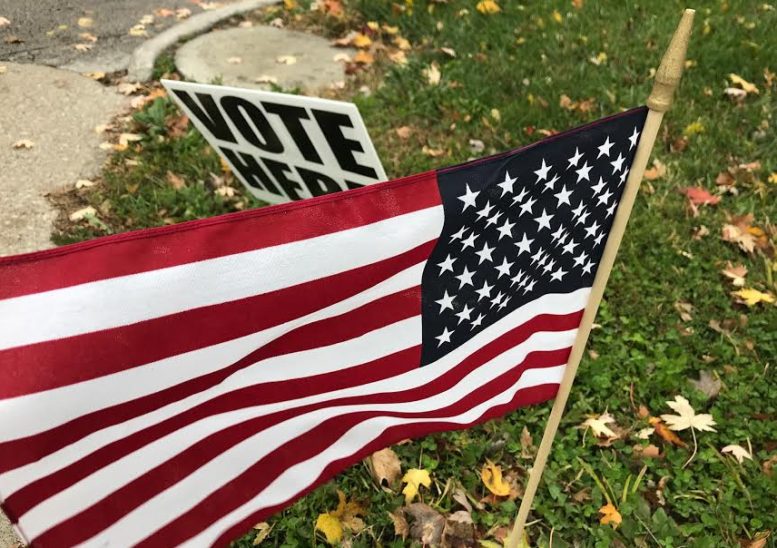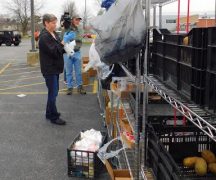BY NICK EVANS
“It all comes down to turnout.”
The enduring mantra of candidates and campaigners is self-evident to the point of banality. But buried in that simple formula are questions about how exactly to drive engagement and who specifically needs additional encouragement.
On the eve of an election with two hot button statewide issues topping the ballot, Innovation Ohio Education Fund has released a report digging into the 2.7 million voters sitting out of Ohio’s elections. The report details demographics for voters who are eligible but not registered as well as those who are registered but inactive.
Report data
Innovation Ohio’s study relies on data from the U.S. Census, the Ohio Secretary of State and the commercial voter database Catalist. Researchers started with Ohio’s universe of potential voters — the citizen voting age population, or CVAP — and compared it those who actually showed up between 2018 and 2022. Then they split those who didn’t cast ballots into two camps: unregistered and inactive.
In all, 2 million eligible Ohioans remain unregistered. Another 700,000 are on the rolls but have missed the past three federal elections.
“They’re in danger of being purged, right?” Innovation Ohio President and CEO Desiree Tims explained.
As part of its annual voter list maintenance procedures, Ohio’s secretary of state identifies any voters who have not participated in the past four years. County boards first send a postcard warning voters about the impending cancellation. If the voter doesn’t respond, or take a handful of other actions, election officials remove their name from the rolls.
“So, we know that if we don’t remind people there’s an election, you have to vote, you have to participate, then they will be purged,” Tims described. “And then when they want to vote, they’ll show up at the polls, and then they won’t have an opportunity to participate and let their voice be heard.”
There are notable similarities among the unregistered and inactive voters — unsurprisingly the biggest share of both show up in and around urban centers. But there are also notable demographic differences. Compared to the CVAP, unregistered voters tend to be older; inactive voters tend to be younger with a greater share of Black voters.
Who are the inactives?
About 86% of Ohio’s registered voters are white, with Black and Latino voters accounting for 11% and 2% respectively. But among the inactives, Black voters account for nearly twice that many. Tims explained roughly 1 in 5 inactive voters are Black.
When it comes to age, Ohio’s CVAP splits cleanly right around age 50, with half of voters falling below and half above. But at 64% of the total, younger Ohioans represent a bigger share of inactive voters. A slight majority of the subset are female, and in terms of geographic distribution, they tend to cluster around college campuses.
Who are the unregistered voters?
The voters who are eligible but unregistered reflects the Ohio’s CVAP closely when it comes to race and geography. Similar to the overall voting population, 82% of unregistered voters are white and 11% are Black. Their geographic distribution follows the statewide pattern as well, with large shares near the three Cs and nearby suburban counties.
Men are over-represented in the unregistered population. Among registered voters, men account for 47% of the total; among unregistered voters they represent 57% of the population.
Where the unregistered population stands out, however, is age. While a large majority of inactive voters are younger than 50, 70% of the unregistered population are older.
Takeaways
Tims argued the report demonstrates organizers need more than one approach when it comes to voter outreach. She contends the challenge isn’t crafting different messages, it’s figuring out ways to get them across.
“I think the biggest opportunity is that we have to meet people where they are, they aren’t going to come to us,” she said.
“Policy wonks and experts and politicians, the people who are engaged, tend to watch the news, they read newspapers, they are online,” she added. “But a lot of the people that we miss are in different spaces. And so what we have to do is reach out to them to meet them where they are in order to engage them in the process.”
The electoral opportunities could be significant. About a quarter million votes separated the top two candidates in last year’s U.S. Senate race. The report demonstrates there are more than ten times that many potential voters sitting on the sidelines. The authors note Black unregistered and inactive voters alone easily exceed that margin of victory.
Answering why voters aren’t engaging in the process falls outside the bounds of the report, but Tims offered a few possibilities. She noted the COVID-19 pandemic happened right in the middle of their dataset. Ditto a contentious redistricting process. Meanwhile, especially at a national level, some politicians are trying to drag their parties to greater extremes.
“I’m sure that has also served a role in turning off people who said ‘I don’t want to get involved in the disputes,’” Tims said.
She argued all of those political currents make participation more stressful, and Ohio’s lawmakers have only added to the burden by imposing strict new photo ID requirements and cutting back early and absentee voting options.
“I think all of that probably culminates to stress,” she said. “And when people are thinking about feeding their families and making their bills, I think this extra layer of stress probably deters them away from participating.”
At the same time, Ohio has pulled out of ERIC, the multi-state compact that shares voter information to maintain accurate rolls. One of the requirements of ERIC membership is for state elections officials to actively encourage unregistered voters to participate. Tims said dropping those efforts aren’t going to increase engagement.
State lawmakers are also considering proposals that would close Ohio’s primary elections by requiring voters to affirmatively choose a party. Tims wouldn’t commit Innovation Ohio to a formal position on the idea. She expressed doubts, though, that it would lead to more participation.
More headlines from Ohio Capital Journal:





